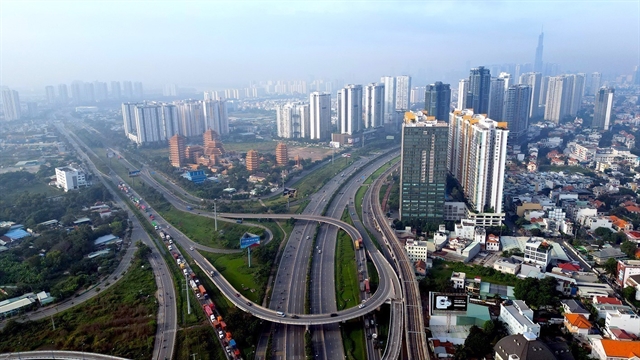PM approves HCM City master plan for 2021–30, targeting GDP per capita of 15,400_ket qua cup c1 chau au
PM approves HCM City master plan for 2021–30,ket qua cup c1 chau au targeting GDP per capita of 15,400
January 02, 2025 - 21:21 |
| High-rise apartment buildings in District 2, HCM City. — VNA/VNS Photo |
HÀ NỘI — Prime Minister Phạm Minh Chính has signed a decision officially approving the HCM City Master Plan for 2021-30, with a vision to 2050.
Accordingly, the southern economic hub aims for an average GRDP growth rate of 8.5 – 9.0 per cent annually within the ten-year period. By 2030, its per capita GRDP at current prices is projected to reach VNĐ385-405 million, equivalent to $14,800-15,400.
Key economic targets include maintaining the service sector’s share of GRDP at above 60 per cent, the industrial and construction sector around 27 per cent (with manufacturing contributing 22 per cent), and agro-forestry-fisheries approximately 0.4 per cent. The digital economy, meanwhile, is expected to account for over 40 per cent of GRDP.
The city population is estimated at 11 million by 2030 and 14.5 million by 2050. Labour productivity growth is targeted at 7 per cent annually, with its human development index (HDI) exceeding 0.85.
Urbanisation is set to surpass 90 per cent by 2030. Efforts will focus on doubling the city’s poverty threshold relative to the national standard and eradicating poverty based on national criteria by the decade’s end.
The plan notes the formation of concentrated agricultural zones and high-tech agricultural areas in HCM City's Northwest, Southwest, and Southern localities. It also includes the reforestation of some 200 hectares in Cần Giờ District’s protected forests and the development of a fisheries hub there to support deep processing and port operations.
The city plans to advance core industries such as design and manufacturing of electronic components, integrated circuits, flexible electronics, chips, advanced batteries, new materials, clean energy, and renewable energy, along with biochemistry, pharmaceuticals, and semiconductor materials production. Additionally, existing sectors, including footwear, apparel, and furniture, will undergo restructuring to increase value-added output.
Also poised to become a leading e-commerce hub in the southeastern region, HCM City plans to enhance retail channels while professionalising and digitising wholesale supply chains. — VNS
- Kèo Nhà Cái
- Nhận định, soi kèo Chivas Guadalajara vs Puebla, 08h05 ngày 16/4: Khách buông xuôi
- Cán bộ Viện kiểm sát Kontum xe ở nhà lại bị bắn tốc độ ở Hà Tĩnh
- Slovenia sẽ có nữ tổng thống đầu tiên
- Việt Nam công bố 19 ca Covid
- Soi giá xe Ford Escape 2020 ở Mỹ
- Mất cả gia tài chữa hiếm muộn
- Nhà đẹp lung linh đón Giáng Sinh với những ý tưởng decor hiện đại
- Nhận định, soi kèo PSIS Semarang vs Persik Kediri, 15h30 ngày 11/4: Những người khốn khổ
- Nam tiếp viên hàng không lây lan Covid
- Siêu máy tính dự đoán Legia vs Chelsea, 23h45 ngày 10/4
- Hình Ảnh
 Nhận định, soi kèo West Armenia vs Ararat Yerevan, 19h00 ngày 14/4: Chủ nhà chìm sâu
Nhận định, soi kèo West Armenia vs Ararat Yerevan, 19h00 ngày 14/4: Chủ nhà chìm sâuViệt Nam đặt mục tiêu có thêm 10 triệu thuê bao sử dụng smartphone năm 2022
Khán giả bất ngờ với giọng hát khác lạ của 'bé' Xuân Mai sau nhiều năm vắng bóng
Sao Hàn 18/6: Thành lập một tổ trọng án điều tra scandal của YG Entertainment
- Tin HOT Nhà Cái